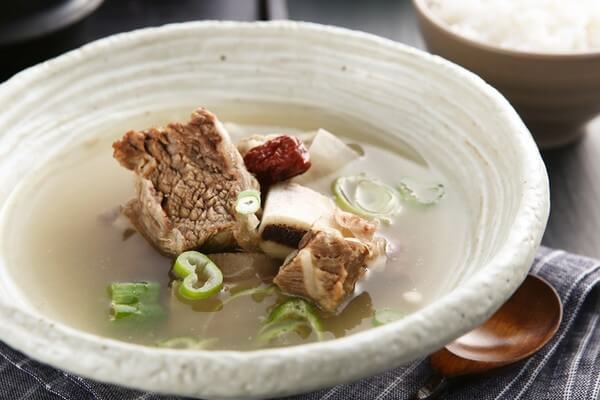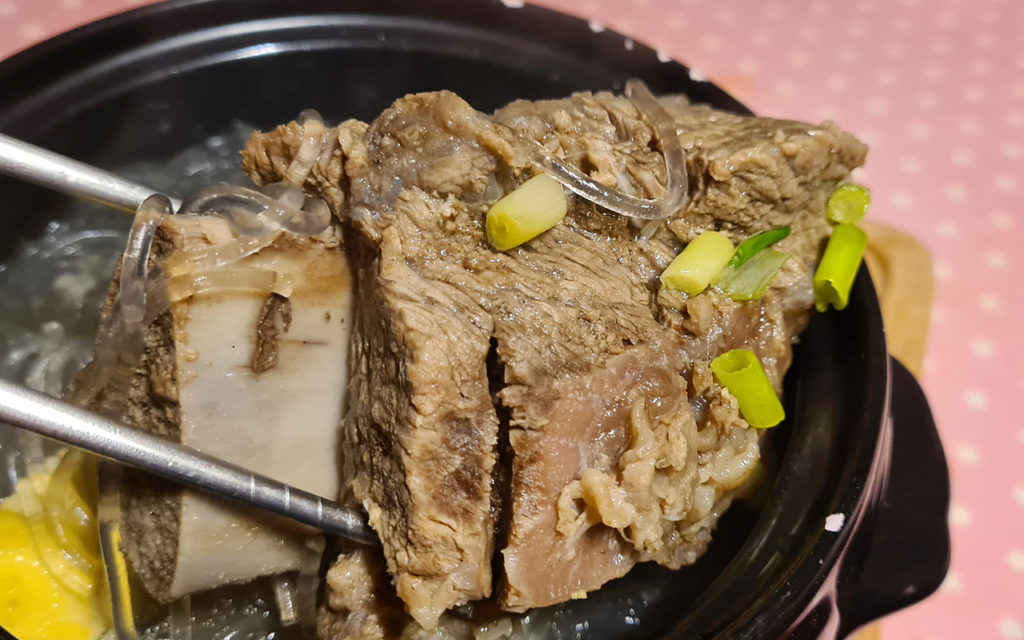Korean food is mouthwatering. The Korean barbecue and Kimchi have made the country’s food famous worldwide; however, there’s more to Korean food than just kimchi. Soups and broths are also flavorsome and full of energizing nutrients that have healing elements.
Galbi tang (갈비탕) or Short Rib Soup is one of the staples of Korean energizing soups, and its energizing qualities make it one of the favorite soups of locals. Keep on reading to find more about this delicious dish and how to cook it yourself at home.
Galbi Tang (갈비탕)

Galbi tang is an energizing soup that, although takes a couple of hours to cook; it’s worth the time as it’s a vitalizing and delicious staple of Korean food.
Many Koreans think of Galbi tang when they are sick, have caught a cold, or want to recover from a hangover. Also, it’s common to see this dish served at receptions such as weddings. Although most weddings now serve buffets, some weddings continue to provide their guests with Galbi tang.
According to traditional Korean medicine, beef has nutrient-rich components that warm and protect the body, helping the immune system and boosting energy levels. This medicinal feature of Galbi tang is similar to that of Samgyetang. Usually, pricier Galbitang soups include more healthy ingredients such as ginseng, jujube, and pine.
Many restaurants around Seoul serve Galbi tang starting at 8,000 won, around USD6.8.
Characteristics of Korean food
Korean food is usually accompanied by rice and kimchi.
When ordering at a restaurant, you will usually be served rice. If you order soup or broth, the restaurant will serve you rice and side dishes as well.
The side dishes typically include marinated vegetables and kimchi. Kimchi is recognized as one of the healthiest foods around the world, through the process of fermentation Kimchi acquires healthy bacteria (lactobacilli) that help digestion. Also, it’s loaded with vitamins A and B.
Given its wide use of vegetables and kimchi, Korean food is considered balanced and healthy. Many traditional dishes are considered “Boyangsik”.
Boyangsik
Galbi tang is considered a Boyangsik food. Boywangsik is food that strengthens and replenishes the body, so Koreans tend to seek this kind of food when they are feeling weak or sick, but also during particular days of the year.
According to the lunar calendar, there are three major hot days yearly that mark the beginning, mid, and end of summer. During these days, it’s believed that eating boyangsik food helps people gain the energy lost due to the intense heat. Boyansik food includes protein-filled ingredients such as seafood, chicken, duck, octopus, nuts, among others.
Also, Confucianism played a role in Korean cuisine as well. Confucianism principles seek balance in energies, and this has been applied to mixing ingredients and to oriental medicine.
Korean food balances ingredients to find harmony, particularly when preparing healthy dishes. Oriental medicine classifies three body types: soyang type, soeum type, and taeeum type.
Oriental Medicine
According to oriental medicine, each type of body has more or less warm and cold energy. In this manner, food also has warm and cold energy, based on the ingredients. People with a body type that has a lot of heat in their bodies, should not consume foods that have hot energy. Instead, they should opt for fresh food that balances the temperature of their bodies.
Some foods that are considered to have warm energy are garlic, chicken, and ginseng.
Foods that are considered to have cool energy to balance body temperature are watermelon, oyster, and duck.
The goal of oriental medicine is to find harmony in the temperature of people’s bodies.
How to Cook Galbi Tang

Now, let’s find out how to cook Galbi tang at home.
Ingredients
- Beef short ribs
- Korean radish
- Garlic
- Water
- Salt and Pepper
- Scallions
- Green onion
- Egg
Recipe
- Begin by putting the ribs in cold water and let them soak for about 45 minutes. This will expel the blood and impurities. You may choose to change the water every 25 minutes if you see that the water is too concentrated by the impurities.
- Then, simmer the ribs in a pot with boiling water. Let the ribs boil for 5 minutes, and you will see how they begin to expel the blood and impurities again; this will be visible as these impurities will be floating or will build a foam.
- As the ribs simmer, you can start preparing the vegetables for the soup. Peel and cut the Korean radish, ginger, 4 garlic cloves, and cut the green onions in half.
- Once the ribs have had the first boil, wash them again and put them together with the prepared vegetables in a large pot with about 12-14 cups of boiling water (3 and a half liters). Boil for about an hour or until the radish is tender.
- Then, remove the vegetables and leave the ribs boiling for another half an hour.
- Take the vegetables that we have removed from the soup and separate the radish. When the radish cools down, cut it into small pieces and put it in a bowl. Next, add 3 large spoons of soy sauce, 1 small tablespoon of sesame oil, 2 cloves of chopped garlic, a little pepper powder, and the rest of the chopped green onion. Mix everything well with the radish, so that it absorbs the flavor.
- After half an hour, add the marinated radish to the soup and leave it to boil for about 5 minutes.
- And after that last boil, the galbi tang is ready and can be accompanied by rice.
Now that you know how to cook Galbi tang, you can have an energizing meal when you are feeling sick or weak.
If you are visiting Korea, don’t forget to try Galbi tang, it’s a staple dish that is as popular as Samgyetang and is loved by locals. If you can’t wait to try it, enjoy cooking galbi tang at home and share this delicious Korean dish with friends.